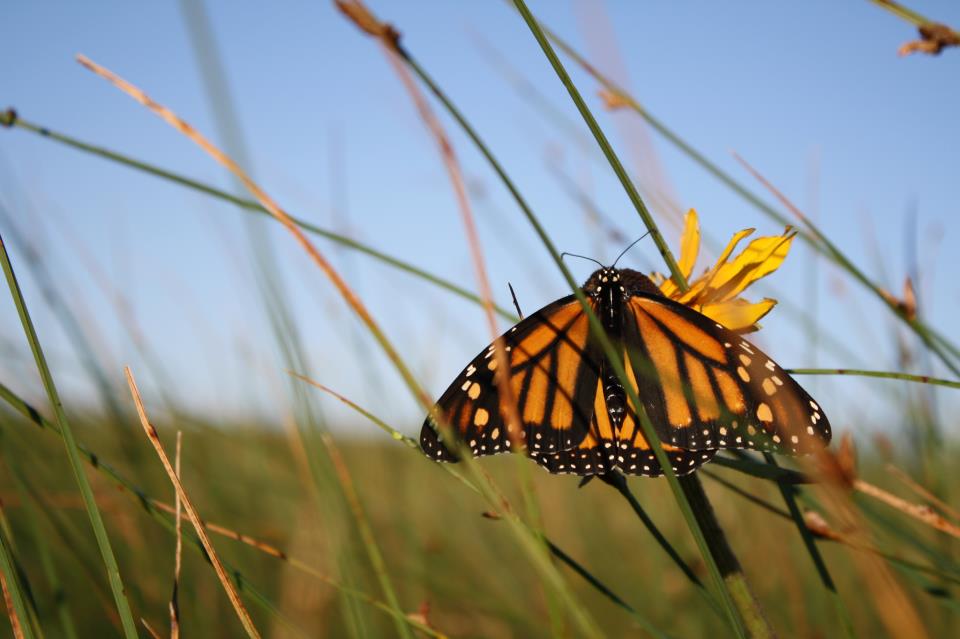Tierra Curry grew up in Appalachia and remembers the mountains teeming with big orange and black monarch butterflies. But today, as senior scientist at the Center for Biological Diversity, she knows monarchs are in serious trouble. In fact, by some estimates, monarch numbers are down more than 80 percent from their 20-year average.
“Back in the mid-1990s, there were nearly a billion monarchs,” Curry says. “The last two years, the populations have been the lowest ever recorded.”
And Curry says monarch numbers are now so low, the species could easily be wiped out. For instance, in 2002, a winter storm killed more monarchs than exist today.
“Because they all go to the mountains of Mexico for the winter and they cluster on these trees in this small area, they’re incredibly vulnerable to bad weather,” Curry says. “And this year in particular, with El Niño, they’re threatened by severe storms and by drought.”
LISTEN: “Saving the Monarch Butterfly”
Curry’s group, along with the Center for Food Safety, petitioned the U.S. Fish and Wildlife Service (USFWS) in 2014 to list monarchs as threatened under the Endangered Species Act. The agency launched a review, which was supposed to conclude within a year. But USFWS has yet to announce a decision. Now, the environmental groups are suing.
“We want to get a legally binding date—when they’ll make a decision whether or not to protect the monarch under the Endangered Species Act,” Curry says.
Georgia Parham, a spokesperson for the U.S. Fish and Wildlife Service, says the monarch petition is one of about 500 the agency is currently looking at. When someone petitions the agency to list a species, Parham says they look at how the species is doing, threats to the species and how those fit with the listing criteria.
But she says the delay in deciding the monarch’s status doesn’t mean nothing is being done.
“A species doesn’t have to be listed for other federal agencies to start looking at it and planning for conservation,” Parham says. “With a species like the monarch, we’re out ahead of that.”
Most notably, President Obama prioritized monarch protection in his 2015 federal pollinator strategy. The government is working with states, Canada and Mexico, and private landowners to rebuild habitat and plant milkweed—the only food monarch caterpillars eat.
Getting buy-in from all those partners will be critical according to Chip Taylor, an insect ecologist at the University of Kansas and director of Monarch Watch, a non-profit group working to help monarch recovery. Taylor says millions of acres of habitat will have to be restored, and the government does not have enough federal land to improve monarch numbers on its on. He says getting private landowners on board could prove to be one of the bigger challenges.
“We’re talking about very conservative areas of the country—Kansas, Oklahoma and Texas—which are really important for monarch production,” Taylor says.
In fact, Taylor thinks getting monarchs listed under the Endangered Species Act could even be counterproductive.
“I think what we would see here is that milkweed would disappear overnight. Nobody would want to have it on his landscape, simply because this would mean regulation. People don’t want regulation.”
But Tierra Curry of the Center for Biological Diversity says she’ll continue pushing to get a legally binding agreement on protecting monarchs—preferably before a new president takes over in Washington.
“It’s possible that the next administration might not prioritize endangered species at all. And at that point, it’s important to have a legally binding date for this decision, or it could get put off forever.”
Curry expects to settle out of court on a decision date with the U.S. Fish and Wildlife Service.


